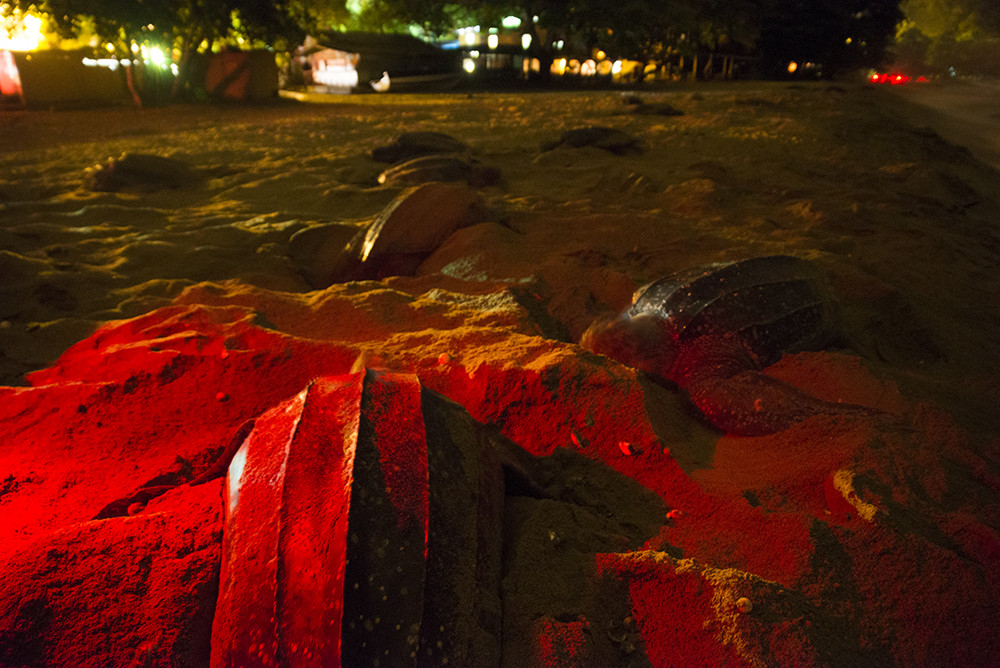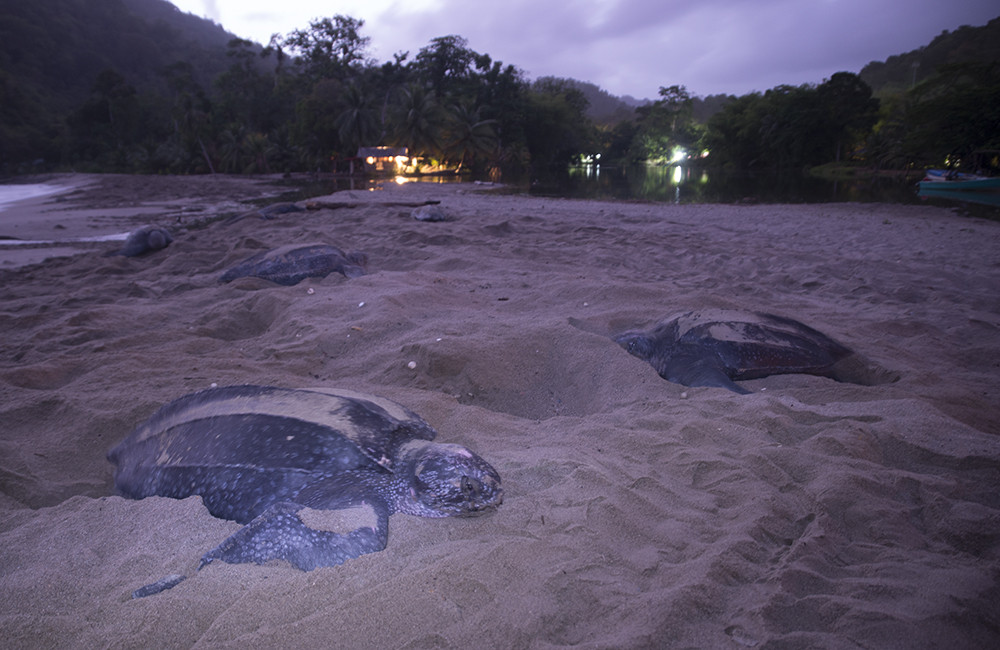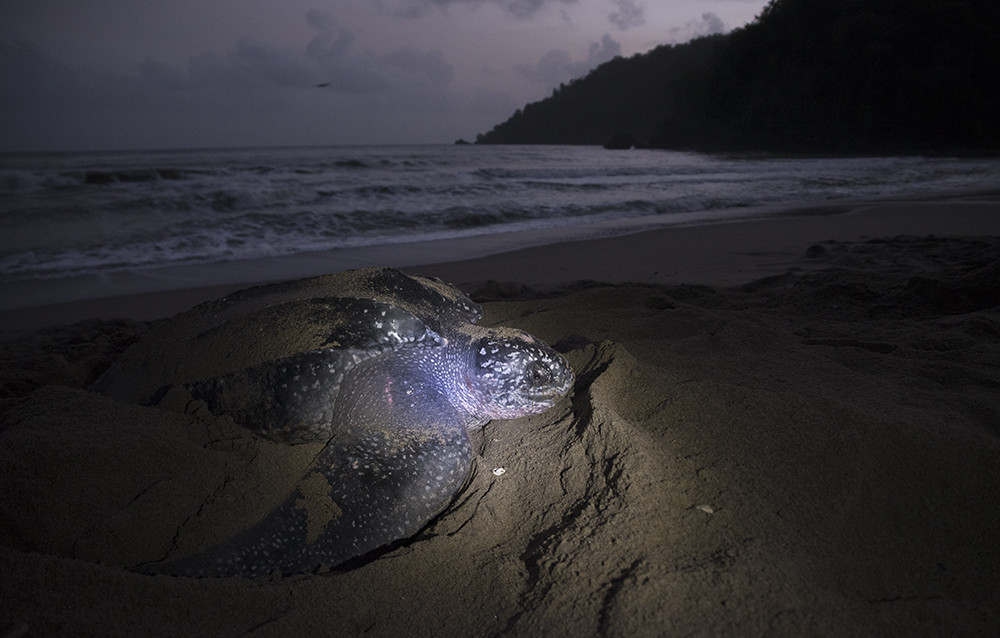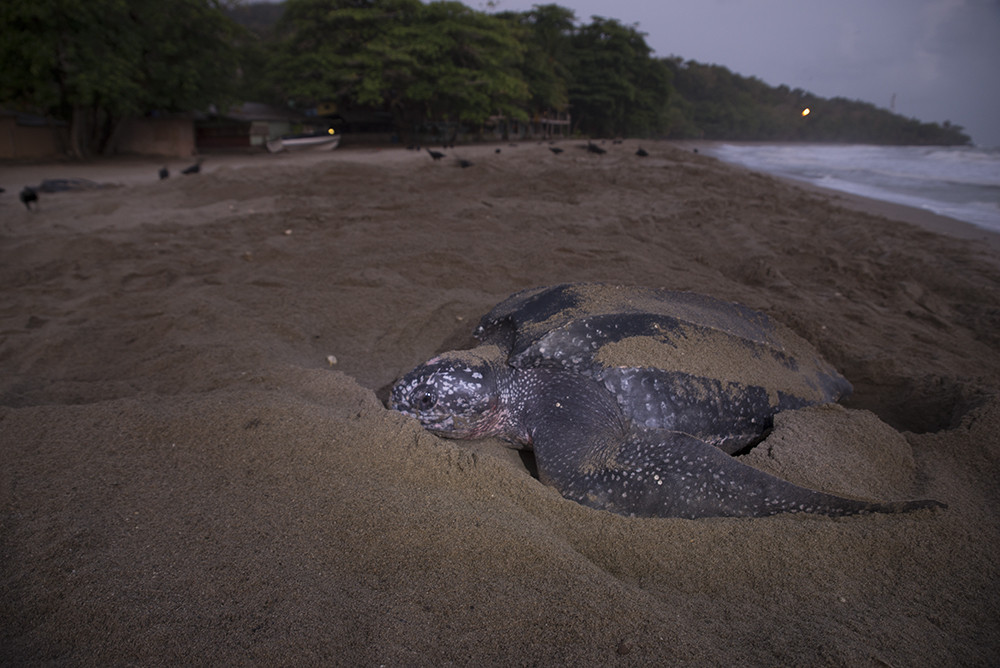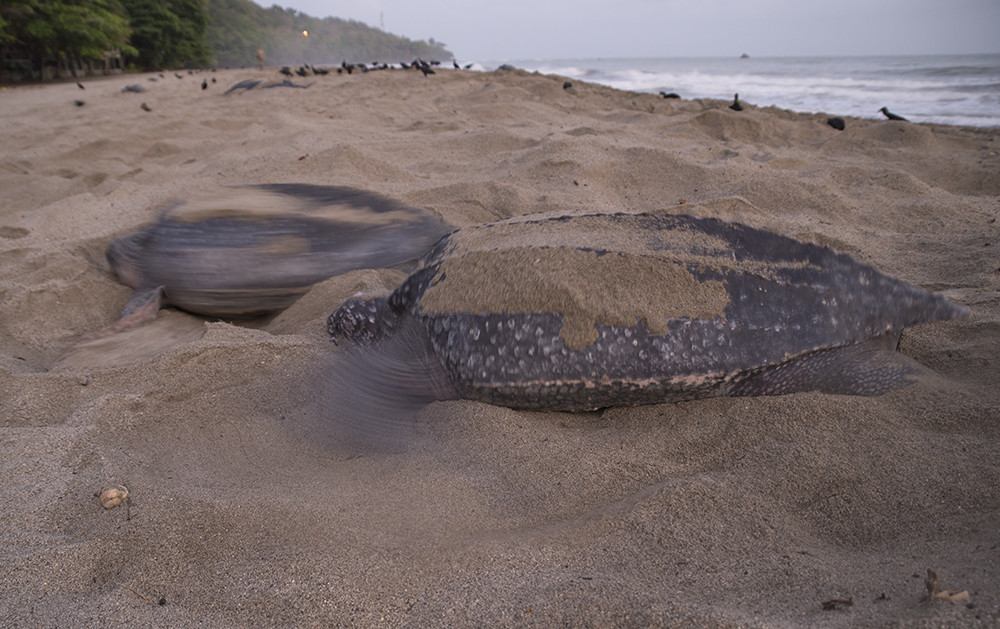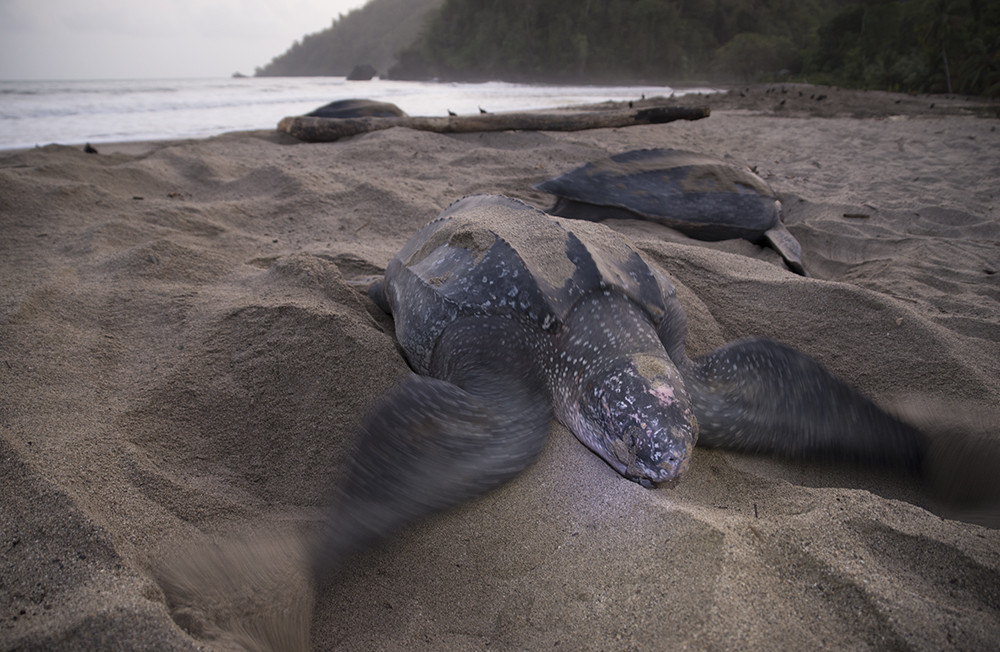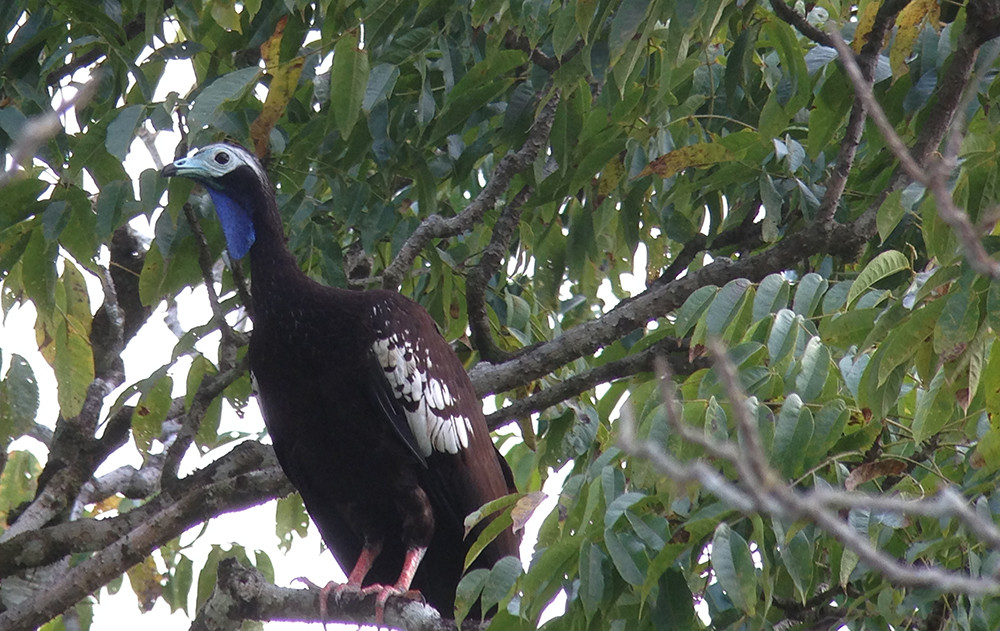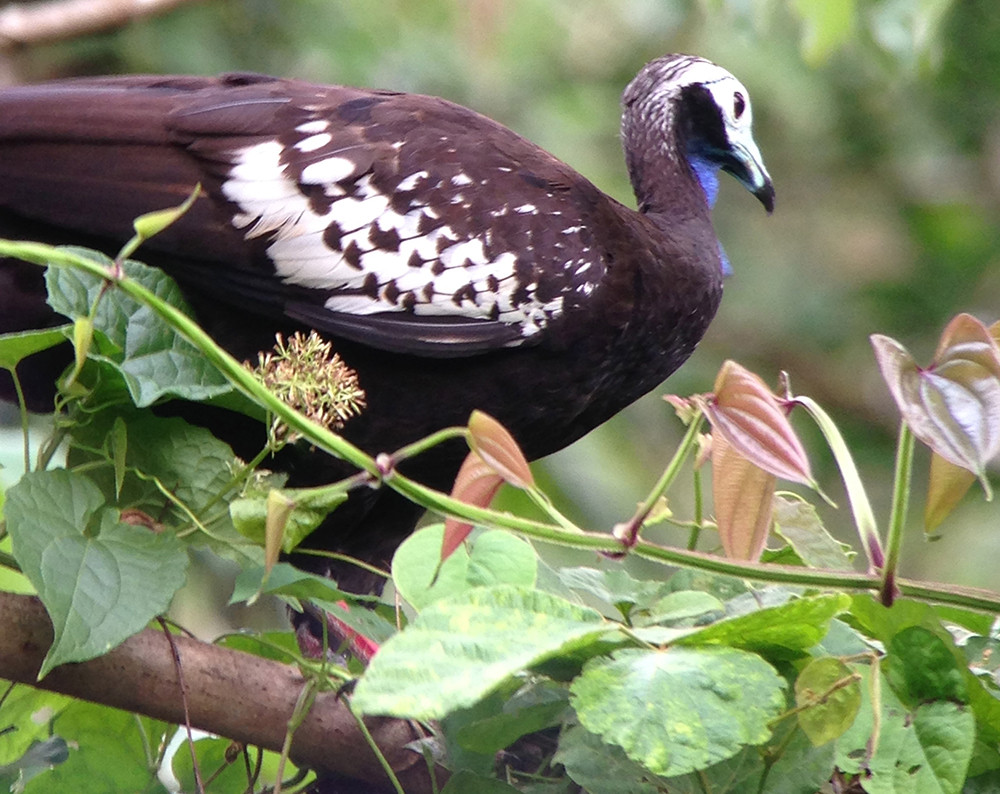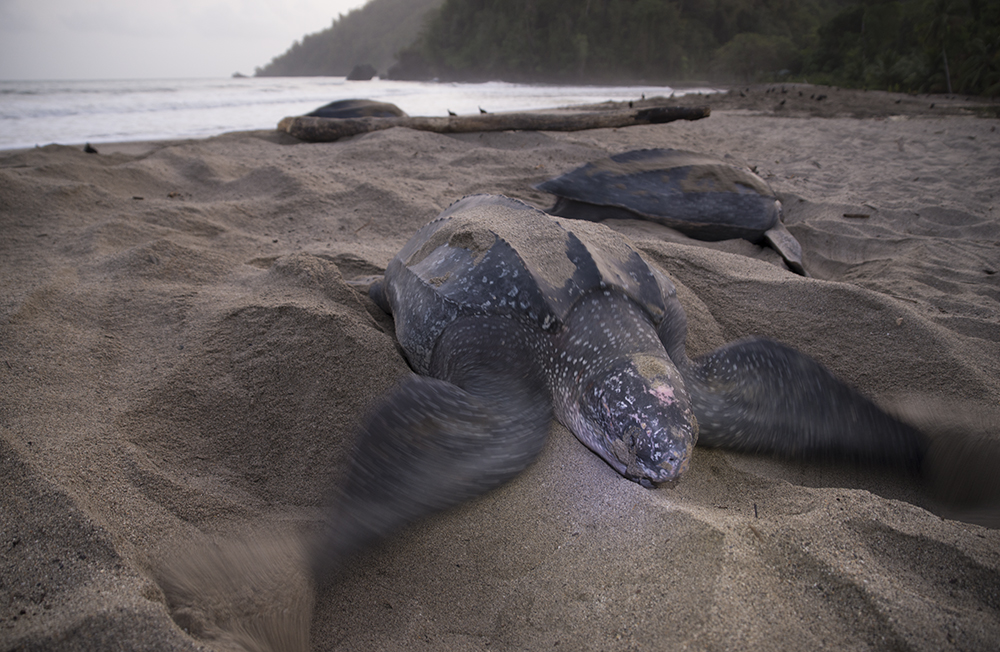It was a warm evening even though the sun had disappeared behind the marine horizon hours prior. Thickly vegetated trees—faintly illuminated by the incandescent porch lights—swayed gently in the sea breeze. The waves rhythmically massaged the stretch of sand on the dark, unseen beach beyond, a beach we’d driven three hours to visit, at night.
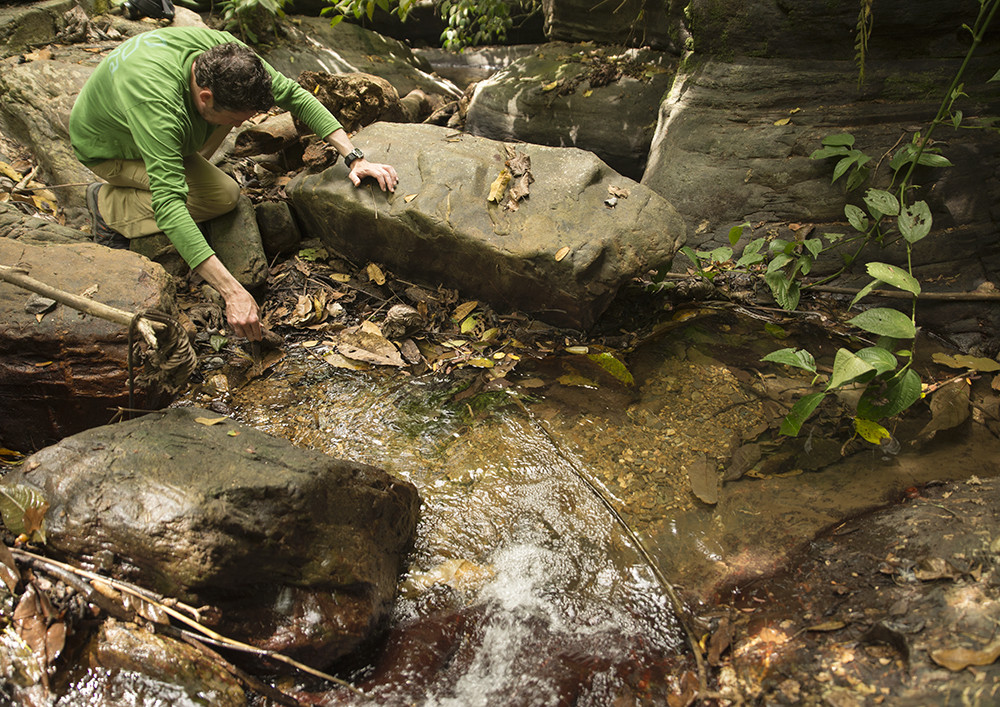
It was the end of our second to last day of our week-long vacation to Trinidad and Tobago. My friend, Toby, a passionate herpetologist, selected this tropical Caribbean location – known for its reptiles and amphibians – as a fitting location to celebrate his 40th birthday. There were birds, too—we’d amassed well over a hundred species after five days, from bellbirds to toucans.
Reptiles and amphibians, though, were harder to come by. After several nights of intensive searching, we’d only located a handful of dingy brown poison dart frogs, flighty ameiva and golden tegu lizards, and a marsupial frog carrying eggs underneath the dorsal pouch of skin for which it is named. No snakes, no turtles. Cool, but not the bounty he’d hoped for.
In an attempt to change our luck, we scoured the sandy beaches on the eastern shore of Tobago—Trinidad’s smaller cousin to the north—the previous night, following the trail of turtle icons on our tourist map, looking for the telltale drag marks of a female Leatherback Turtle pulling herself onshore to lay eggs. By 11’o’clock, the only thing we had to show for it was sand in our shoes and yet another species of bird: a White-tailed Nightjar hawking insects in the bright light of an isolated, roadside power station.
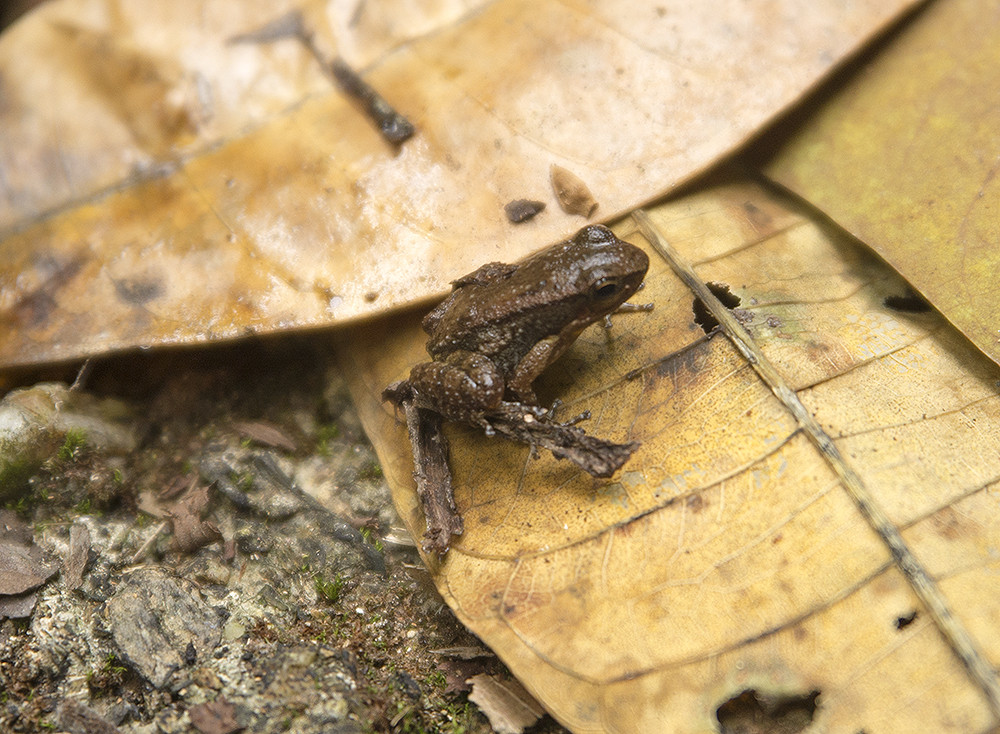
Sorry, Toby.
And with the last three nights of our trip already booked in the industrial capital of Port of Spain, seeing new bird species—let alone herps—wasn’t likely.
But we were on vacation, and the Grand Rivierè region, isolated in the far northeastern corner of the country, hosts one of the largest nesting beaches for the endangered Leatherback. And it’s also one of the most reliable spots to find Trinidad Piping-Guans, a critically-endangered bird species that numbers in the low 100’s and is found nowhere else on earth. And we had a rental car and weren’t scared of a three-hour drive. And I had a credit card.
With one simple email we had a room booked at an eco-resort on the turtle-nesting beach—our most expensive night of the trip (even if it had been our only reservation that night, which it wasn’t).
After an elegant late dinner in an open-air cabana and a five-minute walk, Toby and I were milling in a dirt parking lot with fellow nature enthusiasts and a guide from the Turtle Village Trust.
He marched through the perfunctory speech setting the stage for the ecological significance of the Grand Rivierè, which hosts one of the largest densities of Leatherback Turtles in the world. The species – weighing up to 2,000 pounds – can be found in marine waters in the Pacific, Atlantic and Indian Oceans from the Arctic Circle south to New Zealand and South America, making it a candidate for the world’s widest-ranging vertebrate. Up to 500 females haul up every night on this sandy beach to each lay around a hundred eggs deep in the sand. Those eggs will hatch into an even percentage of males and females if the temperature is just right, 85.1° in fact; more females if warmer, more males if cooler (editorial comment consciously avoided). After two months, hatchlings emerge from the sand and instinctively head to sea. For every hundred turtles born, only a handful live long enough to reach sexual maturity, believed to be about 15 years. After mating, the females will migrate nearly 4,000 miles one-way to the same area where they were born. The males will remain at sea their entire lives.
Our 3.5-hour drive—and welcome cocktails—suddenly didn’t seem so grueling.
We followed the naturalist out of the parking lot. It grew darker and darker as we walked down the dirt road towards the beach. Light confuses nesting turtles, which navigate by stars at sea. Beach-side homes and guesthouses were nearly dark. The number of tourist who can visit every evening is capped and flashlights and flash photography are strictly prohibited.
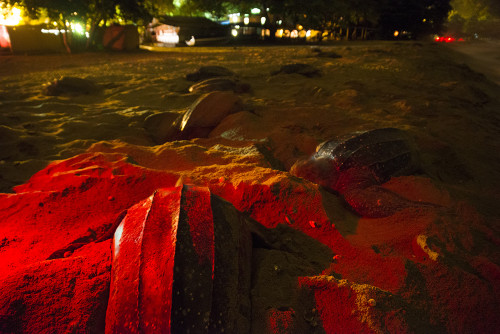
As the dirt underneath our feet turned to sand, my eyes started to adjust. Slowly, enormous black forms began to appear on the wide stretch of sand before us. I was speechless. A fleshy boulder glistened in the moonlight, its long, flat appendages straining to catch enough soft sand to move its hulking frame. First it was one, then two, then a separate cluster of four. We would soon count over 50 of these Volkswagen-sized marine reptiles in an area close enough to be seen in the near darkness. The density of behemoths made it difficult to navigate amongst them.
We trailed the red flashlight of our guide to find a female who was depositing ping-pong ball-sized eggs into a deep, narrow pit she’d excavated with her hind flippers. To avoid using a flash, I set my camera on a tripod for long-exposure shots. It was nearly impossible to focus the camera in the near darkness and the turtles shifted restlessly. Achieving a sharp image of one of these turtles seemed as likely as a hatchling reaching adulthood.
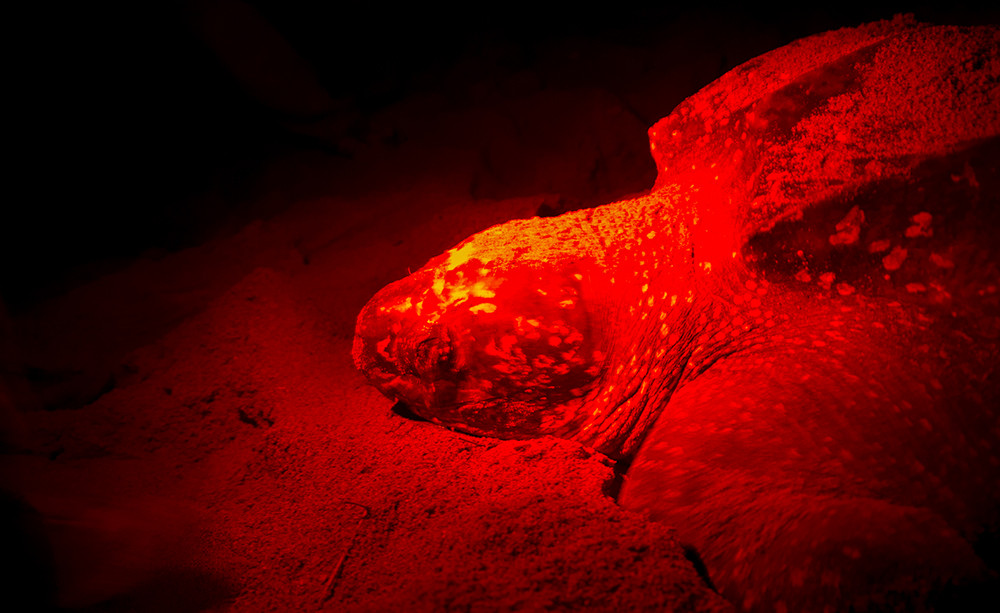
We stayed with one female and watched gelatinous tears stream down her face. I knew that she was dispelling the salt she ingests during a pelagic life, from drinking seawater and a diet that consists entirely of jellyfish. But, considering her journey, and the arduousness with which she completed this evolutionary imperative, it was hard to not anthropomorphize this as pain, or perhaps cathartic elation for her near-completed journey. We knelt beside her and placed our hands, in sheer reverence, on her smooth, hydrodynamic shell.
Nearby, hatchlings were discovered in the tailings of an adjacent female’s excavation (with the density of breeding females, nests are bound to be built on top of one another). Following our guides insistence, Toby and I eagerly helped them to the water.
One by one, members of our group peeled off until Toby and I were the last. We decided it’d be best to leave the turtles in peace and let our guide go home.
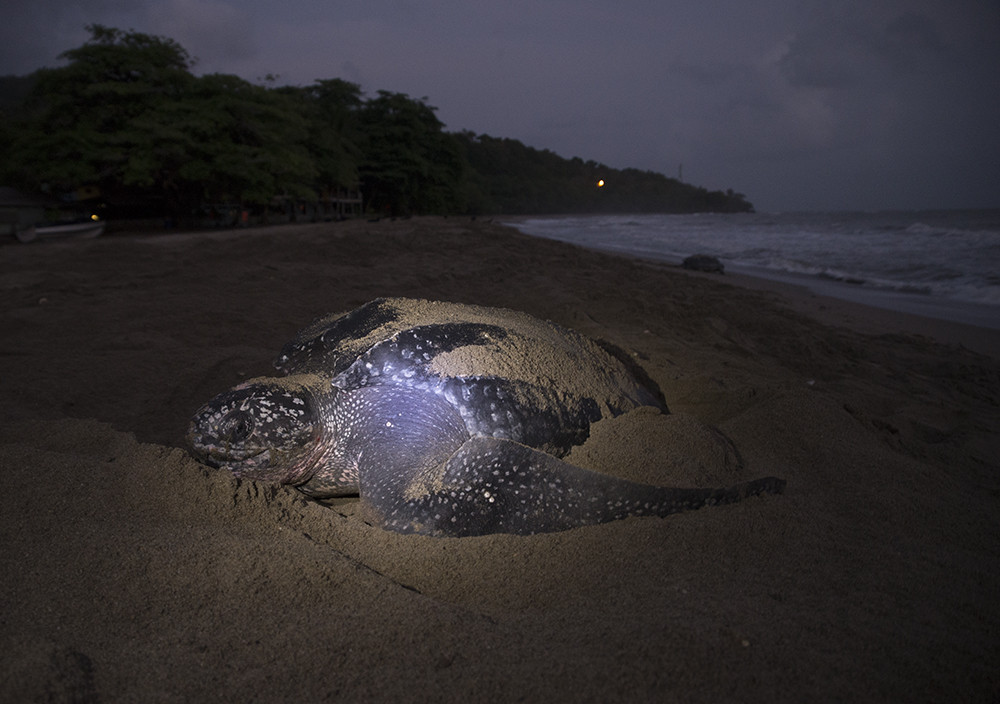
We weren’t gone for long. By 5:00AM the following morning—before our prearranged birding tour—we were out on the beach again to find several dozen turtles in the dim twilight. Black Vultures had gathered to eat the eggs that had been dug up the previous night. Armed with a camera and tripod and the ability to use my headlamp as a supplemental light (impending daylight makes it less likely to disorient turtles with camera flashes), I made quick work of the twenty minutes we had. Thankfully, some of the images turned out.
It wouldn’t have mattered though: I will never forget these impressive animals.
The drive was already worth it but, just in case I had any doubts, within an hour we had crippling views of the national bird of Trinidad, the piping guan. Another endemic that had previously eluded us, the colorful Trinidad Euphonia, was seen minutes later.
That evening, back near Port of Spain on a boat tour of Caroni Swamp, the guide miraculously found a roosting Amazon Tree Boa in an area as massive as it was dense: a proverbial cold-blooded needle in a mangrove haystack. We joked that it was a pet planted there every morning for awestruck tourists. That didn’t matter: it was our first snake in the country.
Check.
